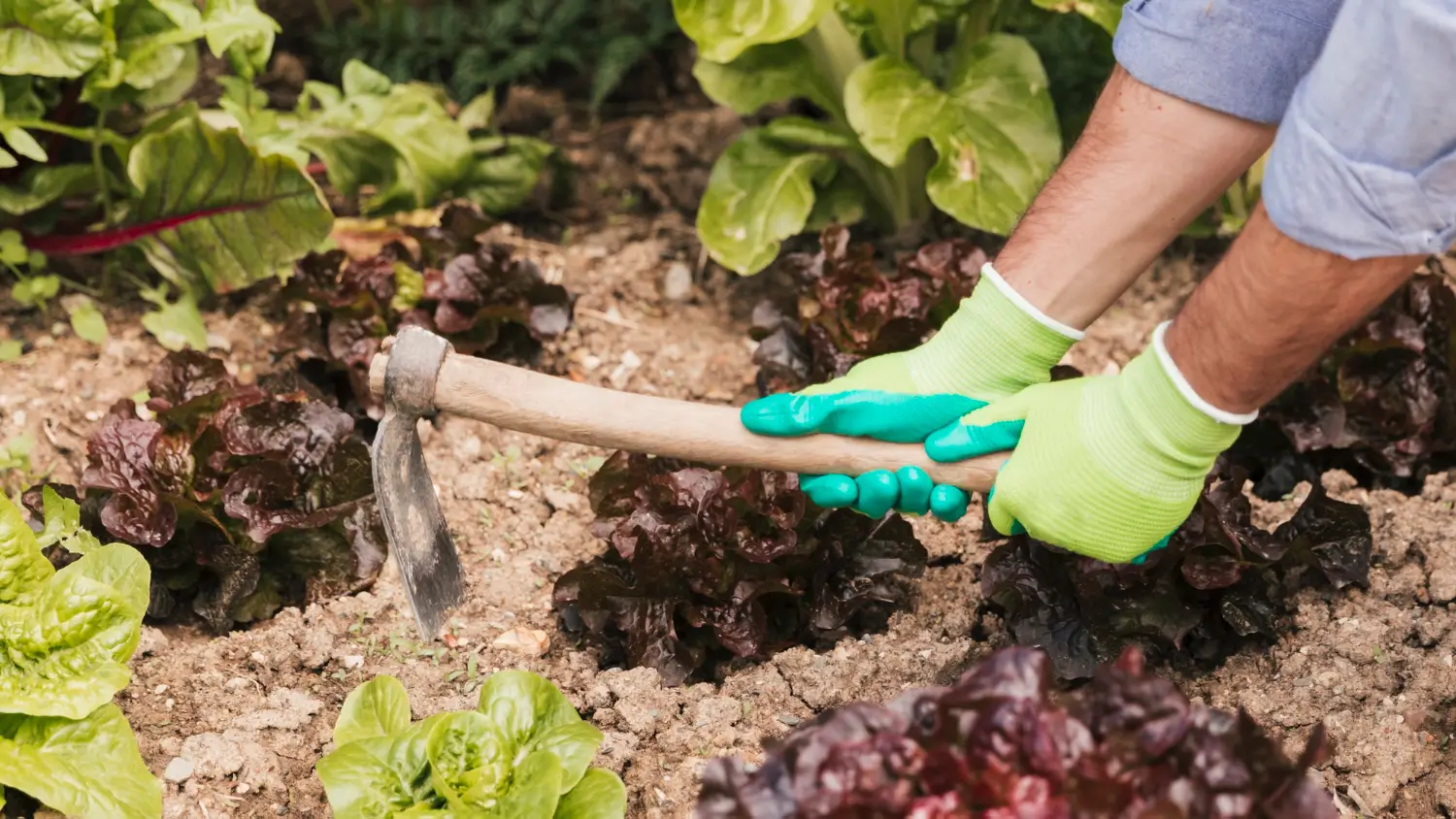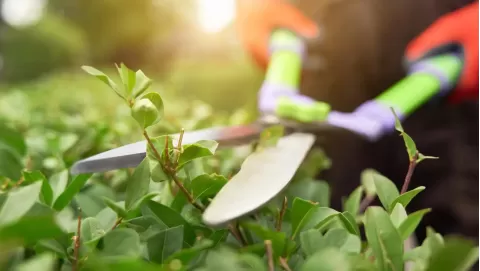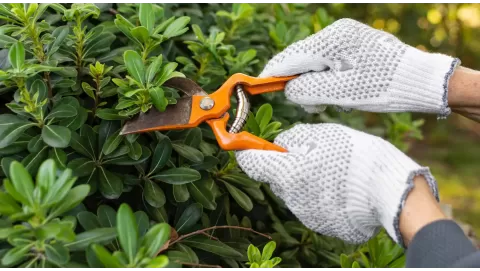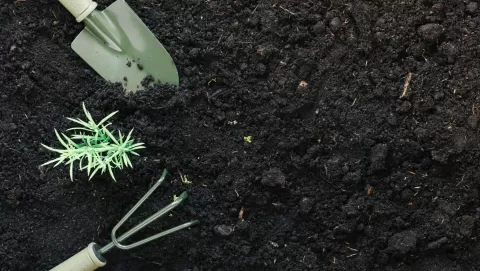
Best mattocks for breaking tough soil and digging with ease
Imagine someone laboring in their backyard, attempting to convert dry, rock-hard soil into a vegetable garden. They reach for a shovel and push with all their might but the shovel hits the ground, bounces back, as if it hit solid rock. After a couple of attempts, they are exhausted and frustrated. There must be an easier way to work with tough soil.
This is where a mattock comes in, which is really handy. It is a proven tool that has been used for years. It has a heavy head with two working ends, one for digging and the other for chopping, which can also break up hard soil, cut into roots, and make digging much easier.
Growcycle is an online platform for the gardeners, landscapers, and DIYers to get the right tools for their outdoor projects like the high-quality mattocks.
Mattock and its History
The mattock is a powerful hand tool used for digging and chopping. It typically comes with a long handle and a heavy metal head with two blades of different types. One blade is flat and wide, like an adze, good for digging or scraping. One end can be pointed like a pick, or shaped like an axe, making it handy for breaking up hard ground or cutting roots.
The mattock has been around for thousands of years. It has roots that trace back to ancient cultivation and building. They were originally made with wooden handles and stone or metal heads. Farmers used them to turn over the soil; builders used them to dig foundations.
Over the years, the design of the mattock improved. Metal tools were made stronger, handles were made more comfortable, and the tool was made better balanced. These days, mattocks feature steel heads and fiberglass or wooden handles, making them more durable, safer and easier to use.
Types of Mattocks
There are different types of mattocks, each constructed for a particular task. Some are good for general digging and chopping as well, while others specialize in particular tasks like trenching or breaking concrete. Here are the primary varieties of mattocks:
1. Pick Mattock
A pick mattock has a sharp point on one side and a flat blade (called an adze) on the other. The pointed end works well at breaking up rocky or compacted soil and the adze side comes in handy for digging. This kind of mattock is commonly used by gardeners, farmers and laborers whose job involves hard, abrasive ground that other implements cannot break through.
2. Cutter Mattock
The cutter mattock features a sharp axe-like blade on one side and an adze on the other. This blade design makes it excellent for getting through dense roots, chopping up small tree stumps, and digging in areas where there are heavy plants. Landscapers and gardeners reach for this kind of mattock while clearing away brush or ripping out stubborn root systems.
3. Combination Mattock (Dual-Purpose)
A combination mattock, also known as a dual-purpose mattock, has characteristics of both the pick and cutter mattocks. One side typically has an adze blade and the other either a pick or axe blade. This makes it a very versatile tool for general use outdoors. It’s one tool that can dig, chop and break tough ground.
4. Grub Hoe Mattock
The grub hoe mattock resembles a garden hoe but is much more robust and heavier. It usually includes a wide, curved adze blade and is useful for digging shallow trenches, uprooting weeds, and forming garden beds. This sort of mattock is used by farmers and home gardeners for digs of a lighter kind on soft or medium soil.
5. Trenching Mattock
A trenching mattock is designed for digging out deep, narrow lines in the ground. It has a narrow adze blade that enables it to carve trenches for pipes, cables, or irrigation lines. It also has a pointed end to aid in breaking hard soil. It is a tool that is often used by utility workers, plumbers and gardeners to dig cleaner, straight channels into the soil.
Common Uses and Applications
Mattocks are great tools for many jobs outdoors. This is a strong, versatile tool that is made for all those tough jobs the other tools just can not handle. The most common uses people make of a mattock are:
1. Breaking Hard Soil
Breaking through harder, compacted soil is one of the primary tasks of a mattock. In parts of the world where the ground is dry, rocky or tightly packed, ordinary shovels often can’t do the trick. The heavy head combined with the sharp blade of a mattock, lets users loosen the soil with less effort.
2. Removing Roots and Small Trees
The cutting edge of a mattock is very good for cutting roots, small tree stumps, and thick weeds. It can burrow under roots and cut through them without a saw.
3. Landscaping Projects
Mattocks are very common in landscaping work. They shape soil, dig holes for plants or fence posts, and assist with the construction of raised beds or walkways.
4. Demolition and Site Clearing
In construction or yard clean-up, a mattock can be used to break up old soil, roots, pieces of concrete or buried debris. Starting out on new projects aids workers in getting through tough materials.
5. Trenching and Utility Work
Some specialized types of mattocks, such as trenching mattocks, are used for digging narrow channels in the ground. They are useful for laying pipes, electric cables, or water lines.
Design Features & Materials
A good mattock is made for heavy-duty work. The design of the head and the materials used here, as well as in the handle play a significant role in how comfortable and effective the tool will be. Here is a closer look at the key features:
Head Material and Construction
High-carbon steel is strong, tough and retains an edge well. It’s great for slicing through roots and tough soil. On the other hand it may require occasional maintenance to stop rusting.
Alloyed materials (combinations of metals with other elements) tend to be lighter and more resistant to rust. They may not be quite as tough as carbon steel, but they are still tough and a lot easier to care for.
The best mattocks use a forged head, which is stronger and more durable than cast or stamped metal. They’re less likely to crack or break under heavy use. It is an appealing trait for professionals or anyone working demanding jobs.
Handle Materials & Ergonomics
The grip plays a crucial part in comfort and control. Common materials include:
- Wood (usually hickory): It’s classic and feels comfortable in hand. It’s sturdy and shock resistant but can break if abused.
- Fiberglass: This is lightweight and weather and moisture resistant. It can be tougher to break and usually lasts longer than wood.
- Composite materials: A fusion of distinct materials, engineered to synergistically balance between strength and comfort. These may have rubber layers or other vibration-reducing features.
Properly weighted mattocks feel smooth in the hand and minimize strain on use.
- Ergonomic handles are designed to fit comfortably in the hands.
- Some have textured grips or rubber coatings that will keep them from slipping.
- Finding a good balance between head and handle will increase comfort during longer periods of utilization.
Dual-Head or Multi-Functional Design
The head of most mattocks has two ends that work differently:
- The axe blade side is for cutting. This works well for chopping roots or small trees.
- The adze side is wide and flat, used for digging, grubbing or scraping soil.
This dual-head design makes the mattock a versatile tool for both digging and chopping tasks.
Some newer mattocks also come equipped with added features to enhance usage:
- These shock-absorbing handles minimize vibration and keep the hands safe during impact.
- Joints between the head and handle are designed specifically to prevent loosening and damage.
- Molded handles or built-in grips enhance comfort and make control of the tool easier.
Weight & Size Considerations
Mattock weight and size affect how easy it is to use:
- Heavy mattocks are better for breaking hard ground because they carry more force per swing.
- Lighter models are more portable and comfortable to use over long stretches of time, particularly in softer ground.
- The handle length is important as well. A longer handle provides better leverage but could be more challenging to use in tight spots.
5 Top-Rated Mattocks
Here are five highly rated mattocks that stand the test with durability, versatility, and performance in hard digging conditions. They all have distinct capabilities for different challenging soil and landscaping projects:
1. Lewis Tools Terra Mattock Hand Tool
This mattock features two cutting blades, a hoe for digging and cultivating on one side, an axe for cutting through roots on the other side to break up compacted soil. It features an all-steel frame for added durability, and the comfortable cushion grip helps to minimize hand fatigue during extended periods of use.
- Digging and chopping blades are set apart for dual-purpose design.
- The head is made from durable, rust-resistant steel.
- Cushion grip, non-slip ergonomic
2. Ames #5 Cutter Mattock with Fiberglass Handle
The Ames #5 Cutter Mattock balances a heavy-duty design with a fiberglass ergonomic handle. This reduces weight but increases durability, which makes this sticker pack suitable for extended work outdoors. Its design positions it for both cutting and digging, enabling gardeners to handle a variety of jobs from soil cultivation to root clearing.
- Durable heavy-duty fiberglass handle yet lightweight.
- It has a dual use mechanism with a sharp cutting edge.
- Good for day-to-day landscaping and garden upkeep.
3. Corona Cutter Mattock
The Corona Cutter Mattock is known for its power and efficiency. Its dual-head design allows it to serve as both a digging tool and a chopping implement. This model is often a favorite among landscapers who want a dependable tool that can tackle dense soil and thick roots.
- Cutting and digging blades are for dual use.
- Rugged construction capable of withstanding heavy use.
- A price that is fair enough to make it affordable without risking quality.
4. Corona Pick Mattock
The Corona Pick Mattock is all about providing additional force when in the field. It has a pick at one end, which works flawlessly for breaking through harder, rockier, or more compact soil, and an adze or chisel side for standard digging. This is ideal for projects that require more vigorous treatment of sub-grade conditions.
- Pointed pick end for high-impact penetration.
- Versatile design that also supports digging.
- Valued by users needing both force and precision.
5. Corona Railroad Pick
While it’s primarily known as a railroad pick, this tool is also a heavy-duty mattock. It has a tempered steel head designed for strength and durability and an ox-eye coupling attached to a sturdy 36-inch hickory wood handle. This unique combination makes it extremely capable when it comes to breaking rock, concrete, and extremely hard, dense soil.
- Head of tempered steel made for optimum toughness
- Heavy-duty use, with its long, durable hickory handle
- Has a pick side for cracking plus a chisel side for smoothing ed
How to Use a Mattock Effectively
When used properly, the mattock is one of the safest and easiest tools for tough digging jobs. Whether people do gardening, landscaping, or construction work, having an understanding of the proper practices can make work quicker and more efficient.
1. Safety Gear and Precautions
Before starting any digging task, safety should always come first. The person using a mattock should wear:
- Gloves to keep their hands protected from blisters and rough surfaces.
- Safety glasses to protect their eyes from dirt, rocks or roots flying into them.
- Durable footwear should ideally have steel toes in case the tool slips or falls and endangers their feet.
2. Site Preparation
The user should examine the work area before swinging the mattock. This includes:
- Removing any obstacles like wires, debris, or large rocks that might get in the way.
- Marking the area clearly, especially if they are digging near utilities.
- Checking for underground cables or pipes, usually by calling the local utility locator service.
3. Using the Adze for Loose Soil and the Axe for Tough Roots
A mattock has two ends:
- The adze (flat, blade-like end) is useful for loosening soil, digging shallow trenches, and shaping the surface of the ground.
- The axe cutting edge is ideal for scraping through roots or hard-packed earth.
Flipping from one side to the other based on the material saves time and effort.
4. Proper Stance and Posture
Incorrect use of a mattock may cause back pain or an injury. To use it safely and effectively, one should:
- Stand with feet shoulder-width apart for balance.
- Bend the knees slightly when swinging the tool.
- Keep the back straight and use the strength of the arms and legs.
- Avoid swinging wildly; controlled, steady strikes are more effective.
Step-by-Step Work Process
Here’s a basic work routine:
- Use chalk, string or flags to mark the digging area.
- Use the adze side to loosen the surface soil, working back and forth.
- If roots or hard spots show up, swap in the axe blade to carve through them.
- Continue working by layers, breaking down the top soil before going deeper.
- At intervals of a few minutes, stop to remove debris or rocks and adjust the technique if necessary.
6. Handling Special Situations
Occasionally, rocks or submerged objects interfere. To handle this:
- Rocks or buried items sometimes get in the way. To handle this:
- Tap gently with the pick or axe to loosen the rock without knocking the edge.
- If possible, try the object out using the mattock as a lever.
When the ground is like concrete:
- A day before digging, lightly water the soil to soften it.
- Instead of going all out and digging deep immediately, strike short and repeat.
- If things are slow, work on things in smaller chunks so as not to frustrate yourself or burn out.
7. Tips for Maximizing Efficiency
Effective work saves energy. Some suggestions include:
- Begin in the day, when it’s cooler.
- Break up the session like rest arms and shoulders; take short breaks every 20–30 minutes.
- Alternate back and forth, swinging and clearing debris to minimize stress.
Certain projects are best done with outside help. For group tasks:
- One person loosens the soil, another scoops it out with a shovel.
- If roots need to be removed, one can chop while the other pulls or cuts at the other end.
- Zone the area and do it piece by piece as a group.
FAQs
What is the best tool for digging in hard soil?
If digging into hard soil, a mattock (ideally with a dual head) is the best tool. It features a wide blade (adze) for loosening soil and a sharp axe or pick for cutting through roots or compacted layers. That also means it’s effective for breaking tough ground than most shovels or hoes.
Which part of a pick mattock is ideal for breaking up soil?
The pointed end of a pick mattock is useful for breaking up hard, rocky, or compacted soil. It focuses the force down on a tiny point, which makes it much easier to split hard surfaces. Use the adze side to clear out the loosened soil.
Which mattock is best for gardening?
A dual-purpose mattock with an adze and axe blade is perfect for gardening and landscaping.
The Bottom Line
A mattock is a powerful tool that will help with stubborn soil, thick roots, and heavy-duty work outdoors. Whether people want to start a vegetable garden, clear a place, or dig trenches, having the right mattock at hand will save a lot of time, energy, and effort. Growcycle helps professionals and DIY folks to find the best mattocks for their specific needs. So, if a regular shovel won’t work on hard soil, it’s time to turn to a mattock. It makes the job much easier.
Disclaimer: This material is for informational purposes only and should not be relied on for legal, medical, financial, or any other form of professional advice.





















